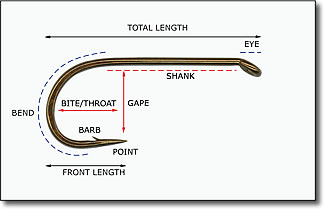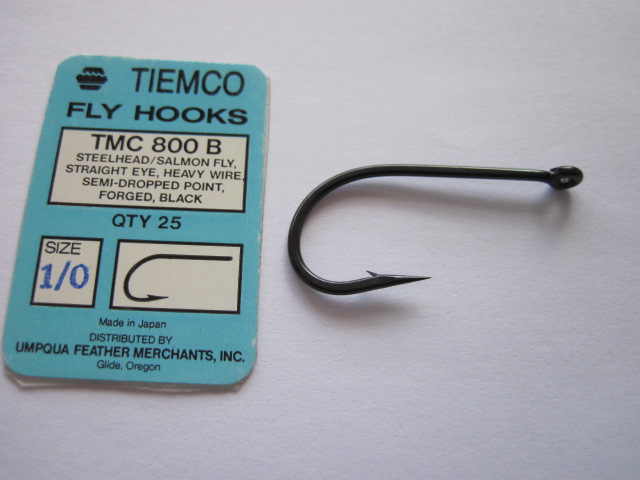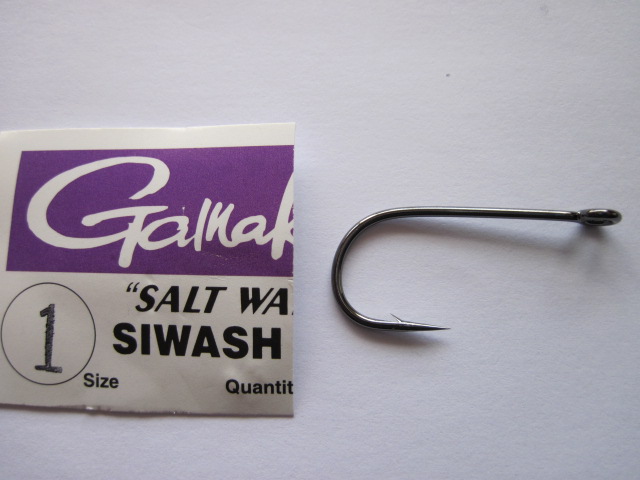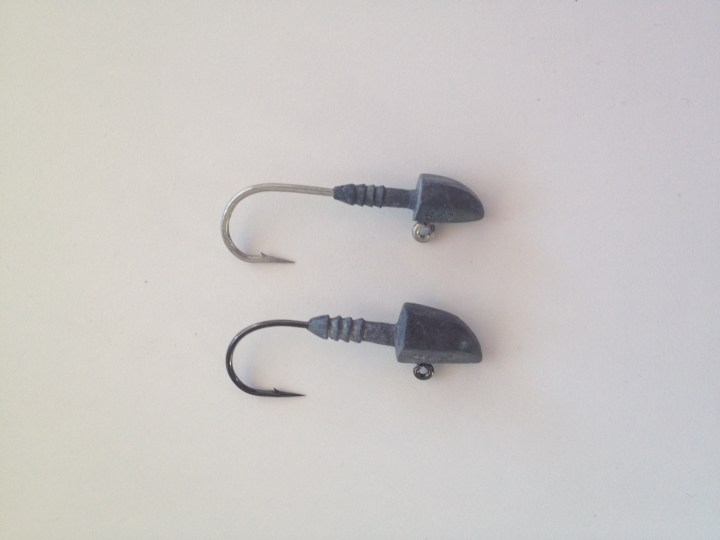Hook penetration is one of the most important aspects of fishing and probably the least well understood. The aim of this article is to help clear up some of the confusion.
The sharpness, length and profile of the point all govern how far the hook point will penetrate into the flesh in and around the mouth of a fish.
The barb is the projection extending backwards from the point that was originally designed to try and reduce the likelihood of the fish unhooking itself during the fight.
Whereas the point profile and its length initially influence penetration, it is the barb, especially its angle and elevation, that will ultimately influence total penetration and holding power.
Historically the biggest challenge for hook manufacturers has always been to make sharp points that were durable. Grinding technology was initially rough and inconsistent, so fish hook manufacturers invested a lot of R&D effort into improving point sharpness. The first improvement was chemical sharpening which surprisingly occurred in the early 1950’s. I say surprisingly as you’d think from the marketing hype associated with many modern hook brands that it was a recent development. The 1960’s saw significant gains in polishing processes but it wasn’t until the 1990’s that hooks with sharp, durable points started to dominate the angling landscape.
Point profile was the next area of focus for hook manufacturers and this has been the major area of innovation in recent times. Roughly speaking, fish hooks are now manufactured according to two different principles namely Pressed and Cut Point and Needle Point.
Barb elevation and design has also changed dramatically over the decades and consequently the prevailing view of what constitutes “right and wrong” when it comes to barb design is significantly different to what it once was. This is most evident when it comes to different angling styles and techniques. As a result, there is an growing trend in consumer preference towards smaller and smaller barbs primarily because this improves hook penetration. Microbarbed or barbless hooks are now employed on a wide range of hook styles, especially those used for light weight and ultra light weight fishing. Larger barbs are now reserved for hooks used for large fish targeted in tough and challenging situations. For example, deep sea trolling where the forward momentum of the boat can be used to help set the hook and where maximum holding power is needed to secure the large fish that regularly jump into the air during the fight.
For needle point (conical) hooks, how far the point will penetrate when force is applied is governed by:-
- the diameter of the wire used in the construction of the hook (commonly called the hook gauge)
- the smoothness of the surface of metal near the point
- the shape of the point, especially the cone angle
- the size and angle of the barb as well as the distance from the point
Of these factors wire diameter (gauge) probably has the greatest effect on how far a hook will penetrate. It has been shown that the thinner the wire gauge the further the hook point will penetrate and the relationship between penetration distance and wire diameter has been quantified mathematically.
In simple terms, if the wire diameter is doubled then it will require four times more force to get the same amount of point penetration. Thinking of this another way halving the wire diameter allows the point to penetrate to the same distance with only a quarter of the force.
Obviously thinner hooks are going to give a better chance of hook up as they will penetrate further when the fisherman strikes. This is where it gets tricky though as thinner gauge hooks are more likely to bend during the fight (especially if the hook has a wide gape and drag settings are heavy) so you have to balance penetration off against tensile strength.
Over the years I have used most of the brands of hooks and styles in my fly tying. Most worked well but there were two that stood out for freshwater fly fishing and these are the Kamasan B175 and Tiemco TMC 2457. The distance from point to barb is relatively short, the barbs themselves are smaller than many styles and overall the hook up rates seem to be excellent.
Compare these two styles with the hook labelled 3666 below which has a much more pronounced barb, steeper barb angle and a marginally longer distance from point to barb. The 3666 hook is not a bad design however it is probably better for fishing sub surface patterns in fast water where the water pressure will aid hook set.
For my saltwater flies, I prefer Tiemco TMC 800 B, Gamakatsu Siwash or the Mustad Saltwater 34007 NPSS hooks. As the images below show these hooks all have relatively large barbs, longish points and sturdy gauge wire.
There are several reasons why I prefer these hooks namely:-
- My primary target is kahawai which frequently jump out of the water during the fight. The larger barbs help improve hook hold when kahawai go aerial.
- In saltwater fly fishing a “strip strike” is used to set the hook when the fish takes the fly. As traces are generally 7 – 10 kilogram at the point this allows the angler to aggressively set the hook and counter the effect of the barb in reducing penetration efficacy.
- The wire gauge is a compromise between light and heavy. This allows the manufacturer to sharpen and smoothly polish the needle points to aid penetration.
- The gape of all three hooks is wide compared to the shank length and this seems to aid hooking efficiency.
- The front length of Tiemco TMC 800 B is a slightly upturned which means that it does not catch on the bottom during the retrieve as regularly as a hook which has a front length that is parallel to the hook shank.
Why is any of this important?
The reason this is important is that choosing the correct hook can have a dramatic effect on hook up and landing rates. To illustrate this I am going to use Nitro jig heads as an example. These jig heads are used in soft plastic fishing.
When Nitro jig heads first started to appear on the market they were fitted with Owner hooks. These hooks (shown at the bottom in the photograph below) had a relatively thin wire diameter, narrow needle point and a shiny black nickel finish. They worked extremely well however they were prone to bend and break, especially if the angler was fishing in deep water and applying huge amounts of pressure to stop fish reaching cover. The nickel coating was also prone to corrosion, especially when it had been scored by fish teeth and was put back into tackle boxes without the salt water residues being washed off.
Obviously this concern was fed back to the manufacturer as the second generation Nitro jig heads were fitted with a thicker diameter (heavier gauge) zinc electroplated hook. The coating was very corrosion resistant but it is nowhere near as smooth and shiny as black nickel. The perfect solution? Not at all!
Because the new hooks had a thicker diameter and the coating less slippery they did not penetrate as far when the angler struck and hook up rates were much lower. Remember that doubling the gauge of the hook means that it will take four times more force to get the same degree of penetration? The problem is exacerbated because soft bait fishermen use very thin lines and are unable to increase the strike force appreciably without breaking the main line braid. My subjective assessment is that hook up rates dropped to around 50% of what they were. Personally, I’d rather have the original hooks as hook bending and corrosion can be easily managed.
Interestingly Nitro subdivided the category in subsequent releases and returned to the thinner gauge hooks for the smaller jig head sizes and retained the heavy gauge hooks for deep-water jig heads that are generally used with much heavier braid. A good compromise all round.
So in conclusion, hooks are probably the most important item in the anglers arsenal as they are the primary point of contact with the fish. Selecting the ideal hook is always going to come down to personal preference but my advice is to:-
- select a hook made with the thinnest gauge wire possible.
- ensure that the wire has high tensile strength and does not bend easily under pressure.
- match the hook to the target species. If your target does not jump then having a large barb is probably unnecessary.
- use hooks with tiny barbs where light tippets are used, especially in fresh water, as this will improve hook set.
- use hooks with larger barbs if you are fishing for fish that jump with heavy tippets and setting the hook with a strip strike.
- make sure that the hook coating is high polished and the transition from point to barb is progressive rather than stepped (i.e. a smooth needle point).








3 thoughts on “HOOK PENETRATION”